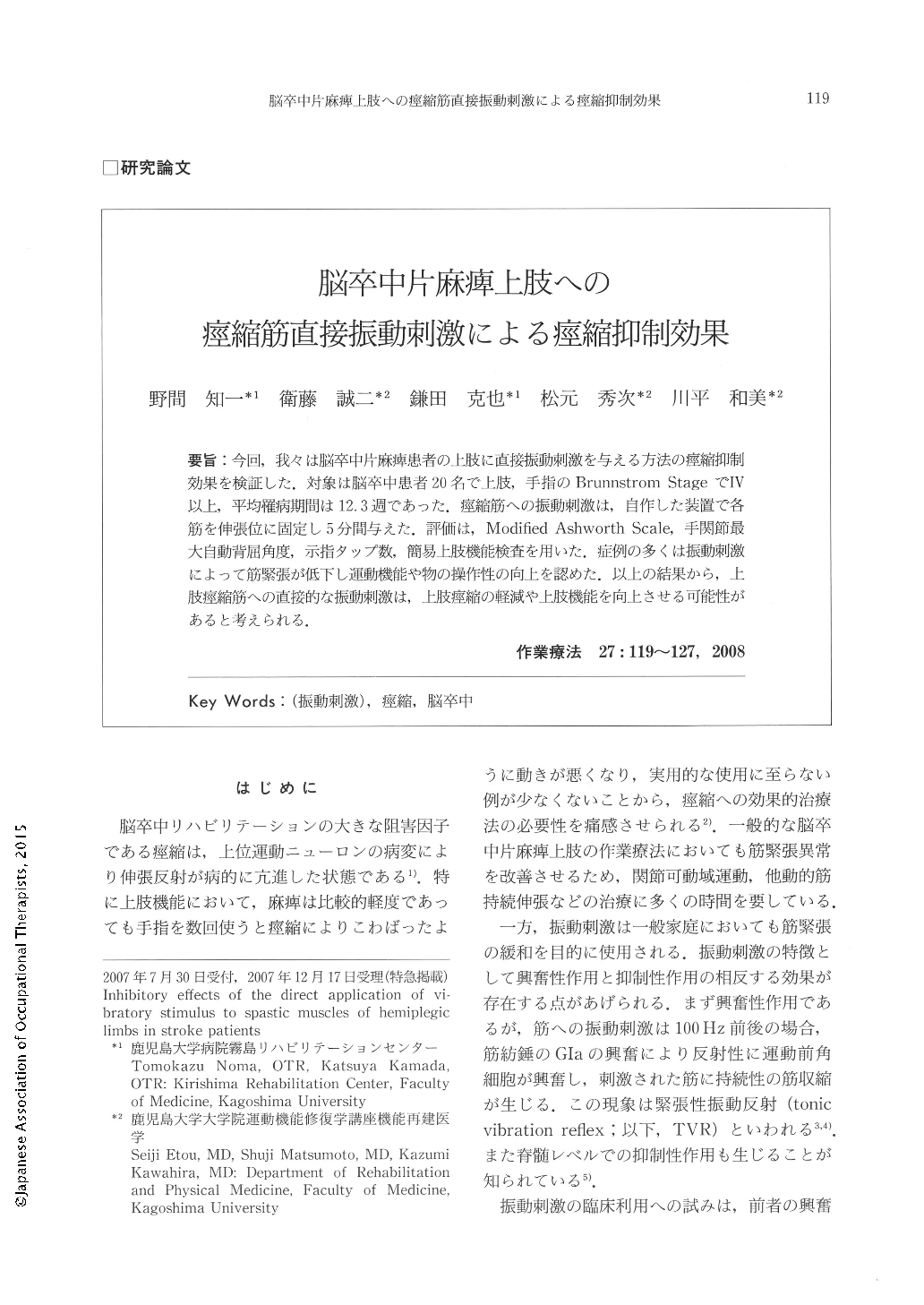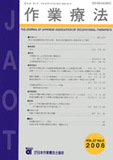Japanese
English
- 販売していません
- Abstract 文献概要
- 1ページ目 Look Inside
- 参考文献 Reference
- サイト内被引用 Cited by
要旨:今回,我々は脳卒中片麻痺患者の上肢に直接振動刺激を与える方法の痙縮抑制効果を検証した.対象は脳卒中患者20名で上肢,手指のBrunnstrom StageでⅣ以上,平均罹病期間は12.3週であった.痙縮筋への振動刺激は,自作した装置で各筋を伸張位に固定し5分間与えた.評価は,Modified Ashworth Scale,手関節最大自動背屈角度,示指タップ数,簡易上肢機能検査を用いた.症例の多くは振動刺激によって筋緊張が低下し運動機能や物の操作性の向上を認めた.以上の結果から,上肢痙縮筋への直接的な振動刺激は,上肢痙縮の軽減や上肢機能を向上させる可能性があると考えられる.
Although vibratory stimulation applied to the antagonist of a spastic muscle has been shown to decrease spasticity of a hemiplegic limb in a previous study, we found that the application of vibratory stimulation directly to the spastic muscles decreased the spasticity in stroke patients. The main objective of this study was to determine the immediate therapeutic effects of the direct application of vibratory stimulation to spastic muscles.
The subjects were 20 stroke patients with spastic hemiparesis. The patients' characteristics were as follows: age, 64.1±9.6 years old (mean±SD); time since onset, 12.3±3.3 weeks; Brunnstrom stage, 5 and 4-6 (median and range). The Simple Test for Evaluating hand Function (STEF), the Modified Ashworth Scale in the wrist, the number of finger tapping and the angle in active dorsiflexion were evaluated before and after the application of vibratory stimulation to the spastic muscles for 5 min.
After the application of vibratory stimulation to the spastic muscles, the parameters relating to spasticity and motor function of the hemiplegic upper limb improved significantly.
Our results show that the direct application of vibratory stimulus to spastic muscles for 5 min is an effective antispastic treatment.

Copyright © 2008, Japanese Association of Occupational Therapists. All rights reserved.


